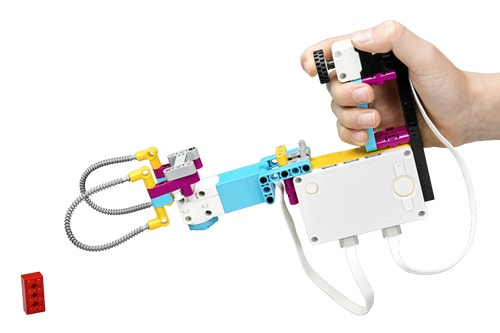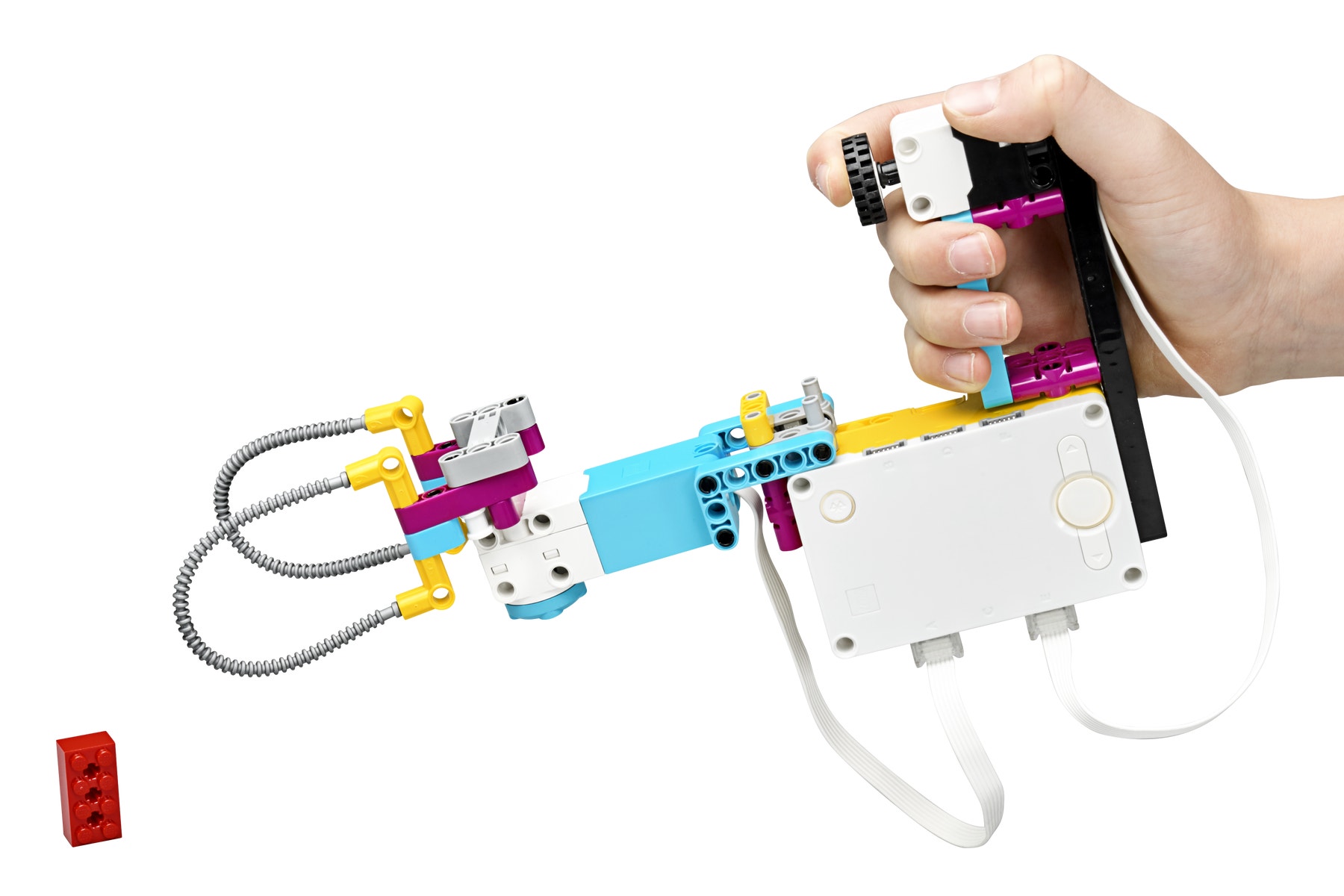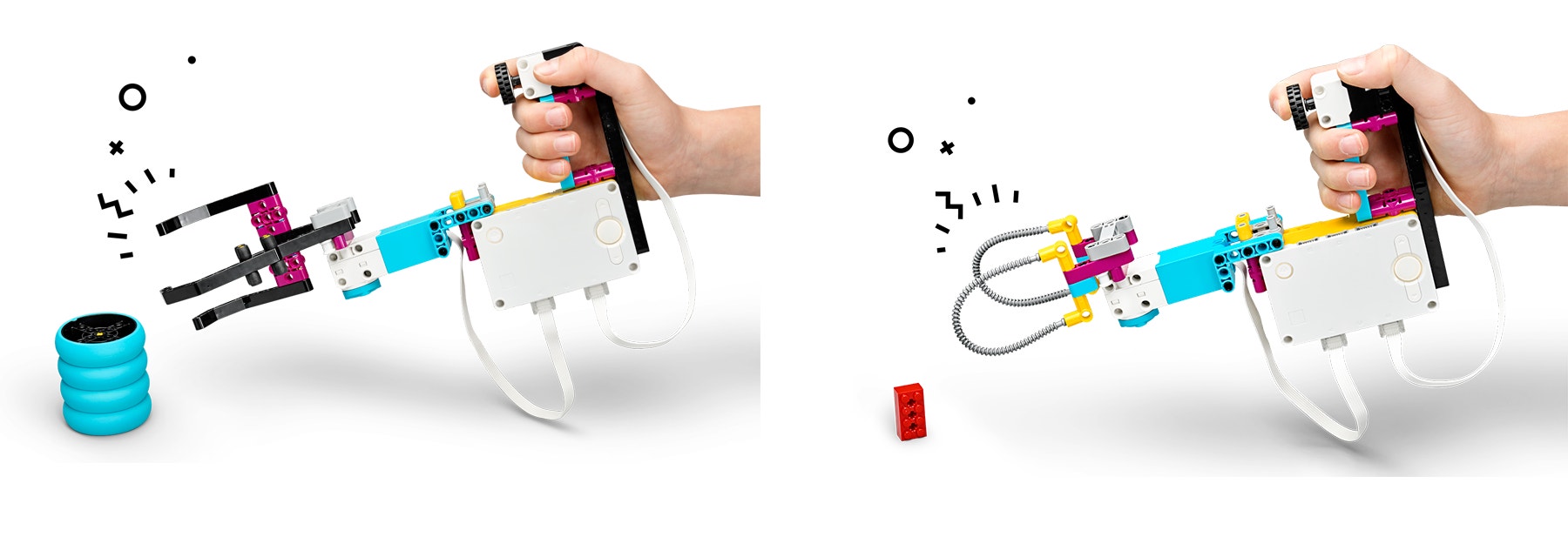Super Cleanup
Test the efficiency of two different grabber designs and determine the best design based on specific test criteria.

Lesson Plan
1. Prepare
- Read through the student material in the LEGO® Education SPIKE™ App.
2. Engage (5 Min.)
- Use the ideas in the Ignite a Discussion section below to engage your students in a discussion related to this lesson.
- Use the video to explain the lesson.
3. Explore (20 Min.)
- Have your students work in pairs to build the hand controller and 2 test grabbers.
- Ask them to play the test program to get an idea of how the grabbers work.
4. Explain (10 Min.)
- Have your students test their grabbers by grabbing:
o Objects of different sizes but similar weights (Test #1)
o Objects of different weights but similar sizes (Test #2) - Remind them to note the test results in their Test tables.
5. Elaborate (10 Min.)
- Facilitate a class discussion about the test results.
- Ask your students to collect objects from around the classroom and to predict which grabber will be best at grabbing each.
- Don't forget to leave some time for cleanup.
6. Evaluate
- Give feedback on each student's performance.
- You can use the assessment rubrics provided to simplify the process.
Ignite a Discussion
Start a discussion about testing by asking relevant questions, like:
- Why do people use grabbers to pick up litter?
- What are some ways you could figure out which grabber is best?
- Have you ever watched product reviews online?
Consider showing an online product review video to spark engagement.
Have your students watch this video to see what they're about to do.

Building Tips
Tandem Build
Split each team's building tasks to ensure that everybody is actively involved:
- Student A: Grabber 1
- Student B: Grabber 2 and Controller

Designed to Grab
Grabber 1 has been designed to grab light, flexible objects. Its flexible claw makes it really inefficient at grabbing big, heavy, or smooth objects.
Grabber 2 has been designed to grab large, heavy objects. Its split claw makes it almost impossible to grab small objects.

Use Common Objects
For testing, you can use any objects that are readily available. You can even have your students select their own objects from around your classroom.
Suggestions for light objects of different sizes:
- LEGO Brick (small)
- Crumpled ball of paper (medium)
- Empty plastic bottle (large)
Suggestions for medium-sized objects of different weights:
- Crumpled ball of paper (light)
- Stack of LEGO wheels (medium)
- Apple (or any round fruit) (heavy)

Coding Tips
Main Program

Differentiation
Simplify this lesson by:
- Limiting testing to 2 objects (e.g., a big object like a bottle and a small object like a pen)
Take this lesson to the next level by:
- Allowing your students to define their own test criteria
- Having your students design their own grabbers, then run the tests again using their own designs
- Incorporating the math or language arts extension(s)
Assessment Opportunities
Teacher Observation Checklist
Create a scale that matches your needs, for example:
- Partially accomplished
- Fully accomplished
- Overachieved
Use the following success criteria to evaluate your students' progress:
- Students can identify testing criteria.
- Students can conduct fair testing.
- Students can draw conclusions based on their test results and communicate them clearly.
Self-Assessment
Have each student choose the brick that they feel best represents their performance.
- Blue: I've successfully tested one grabber.
- Yellow: I've successfully tested two grabbers.
- Violet: I've successfully tested two grabbers and used my test results to determine the best design.
Peer-Assessment
Encourage your students to provide feedback to others by:
- Having one student score the performance of another using the colored brick scale above.
- Asking them to present constructive feedback to each other so that they can improve their group's performance during the next lesson.

Language Arts Extension
To incorporate language arts skills development:
- Have your students create a presentation or a review video highlighting the pros and cons of each grabber.
- Ask your students to upload their videos to the appropriate channels, use comments as feedback.
Note: This will make for a longer lesson.
Math Extension
To incorporate math skills development:
- Introduce the concept of a weight factor as a way of evaluating objects. For example, effectiveness could be measured according to a weighted criteria of 25% aesthetics, 20% cost, 5% portability, and 50% weight. Explain that the sum of all weight factors should add up to 100%.
- Have your students score each grabber (-1 or +1 point ) for each of these extra criteria, then apply the weight factors.
Note: This will make for a longer lesson.
Career Links
Students who enjoyed this lesson might be interested in exploring these careers pathways:
- Agriculture And Horticulture (Horticultural Science)
- Business And Finance(Entrepreneurship)
- Manufacturing And Engineering (Pre-Engineering)
Teacher Support
Students will:
- Define evaluation criteria for 2 designs
- Test 2 designs using objects of different shapes and sizes
- Make recommendations regarding the best design
LEGO® Education SPIKE™ Prime Set
Empty plastic bottle
Ball of crumpled paper
Apple (or object of equivalent weight)
NGSS
MS-ETS1-3
Analyze data from tests to determine similarities and differences among several design solutions to identify the best characteristics of each that can be combined into a new solution to better meet the criteria for success.
CSTA
CCSS.ELA-LITERACY.SL.6.4
Present claims and findings, sequencing ideas logically and using pertinent descriptions, facts, and details to accentuate main ideas or themes; use appropriate eye contact, adequate volume, and clear pronunciation.
CCSS.MATH.CONTENT.6.RP.A.3.C
Find a percent of a quantity as a rate per 100 (e.g., 30% of a quantity means 30/100 times the quantity); solve problems involving finding the whole, given a part and the percent.